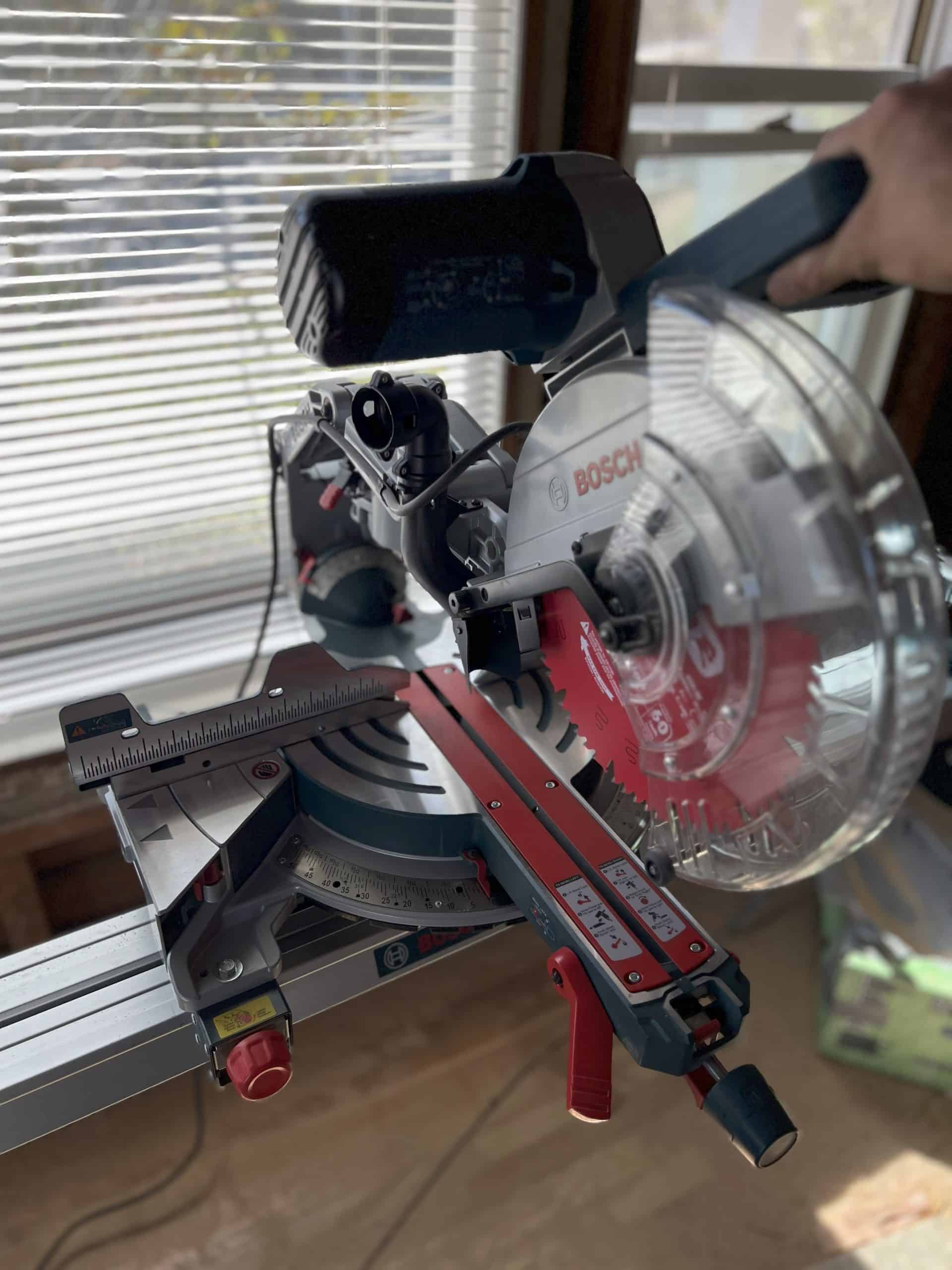Woodworking vs Carpentry Explained: Which is Perfect for You?
Disclosure: This post may contain affiliate links from online retailers, including Amazon. If you click a link and buy tools or supplies, I may earn a small commission—at no extra cost to you. This allows me to provide you free helpful content, and I genuinely appreciate your support🤝 Learn more
If you’ve ever wondered about woodworking vs carpentry, you’re not alone.
I’ve heard folks use the terms interchangeably on job sites, in hardware stores, and even in DIY forums. But after many years in the trades—from high-end finish carpentry to rough framing on actors’ homes in Montecito and custom furniture builds—let me tell you… they’re definitely not the same thing.
They’re closely related, sure. But they have different skill sets, goals, and even mentalities behind them.
So let’s break down woodworking vs carpentry once and for all. Whether you’re a weekend DIYer trying to pick a new hobby or thinking about diving deeper into the trades, this post will help you figure out what path fits you best.
Build Smarter – For FREE!
Join the Tekton Crew and grab 3 FREE Workbench Build Plans with 3D models—plus exclusive DIY tips, tool reviews, and more!
What Is Carpentry?
Carpentry is one of the oldest and most essential trades in the construction world. At its core, it’s all about building structures using wood — from framing walls and installing doors to building decks, staircases, and everything in between.

It’s also the trade I’ve spent the most time in, both professionally and personally. I’ve done rough framing on multimillion-dollar homes, fine finish work in celebrity estates, and restoration projects after wildfires and mudslides in Southern California, so this is my jam.
Rough carpentry is gritty, physical, fast-paced, and incredibly rewarding. Finish carpentry is a slower pace and more meticulous, but it’s just as rewarding.

Common Carpentry Tasks
A carpenter’s daily work can include:
- Framing walls, floors, and roofs
- Installing windows and doors
- Building decks and fences
- Hanging plywood sheathing and trim
- Constructing stairs and railings
- Installing cabinets, baseboards, and crown molding
Depending on your specialty, you might focus on rough carpentry (the bones of the structure) or finish carpentry (the polished details people see).
Tools of the Trade
Most carpenters rely on a mobile, jobsite-friendly tool setup. You’ll typically find:
- Circular saws and miter saws
- Framing hammers and nail guns
- Levels, chalk lines, and speed squares
- Tape measures and layout tools
- Power drills, impact drivers, and reciprocating saws
Carpentry is about speed and precision in the field. You’re often working in changing environments — outside in the sun, inside a remodel, or on scaffolding 15 feet in the air. That means your tools need to be portable, tough, and fast to set up.
Typical Work Environment
Carpenters work on construction sites, residential homes, remodels, and commercial buildings. Unlike woodworking, which is often done in a controlled workshop, carpentry is dynamic.
You’re building in real-world conditions, dealing with tight timelines, material changes, and sometimes bad weather.
But that’s part of what makes it exciting. It’s hands-on, always evolving, and there’s nothing like seeing a project come to life from the ground up.
Build Smarter – For FREE!
Join the Tekton Crew and grab 3 FREE Workbench Build Plans with 3D models—plus exclusive DIY tips, tool reviews, and more!
What Is Woodworking?
Woodworking is the craft of shaping, joining, and finishing wood to create functional or decorative pieces — think furniture, cabinets, cutting boards, wood art, and heirloom-quality pieces that get passed down through generations.

Unlike carpentry, woodworking is usually done in a controlled environment like a shop or garage. It’s more about finesse than speed, and it demands a different level of precision and patience. You’re not just building something that works — you’re building something that looks and feels just right.
I’ve spent countless hours in dusty shops dialing in cuts, experimenting with joinery, and trying to fix a glue-up that went sideways. It’s slower-paced, but deeply satisfying.
Common Types of Woodworking
There are a ton of different specialties within woodworking, including:
- Furniture making – chairs, tables, beds, and built-ins
- Cabinetry – kitchen and bathroom cabinets, storage solutions
- Wood turning – bowls, pens, legs, and round decorative pieces using a lathe
- Joinery – precision joinery without nails or screws (think dovetails, mortise & tenon)
- Wood carving – decorative, artistic, or traditional carvings
Each of these has its own tools, techniques, and learning curve — but all fall under the woodworking umbrella.
Here’s more on the types of carpentry and types of woodworking.
Tools of the Trade
Woodworking shops are usually filled with stationary or benchtop tools that prioritize accuracy and repeatability:
- Table saws, band saws, and scroll saws
- Planers and jointers
- Routers and router tables
- Chisels, hand planes, and sanding tools
- Clamps (you can never have enough)
- Workbenches and jigs
Precision is the name of the game. A piece being 1/16″ off in framing might slide, but in woodworking? That can wreck an entire joint or design.
More posts on tools:
Workshop vs. Jobsite
Woodworking happens in a dedicated workspace — whether that’s a full-size shop or a corner of your garage. This gives you control over your setup, lighting, and environment, which is crucial when you’re working on delicate details or gluing up complicated joints.
It’s quieter, more meditative, and can even feel therapeutic. For me, woodworking is where I slow down and create — not just construct.
Woodworking vs Carpentry: Key Differences

At a glance, woodworking vs carpentry might look the same — both involve working with wood, right? But once you dig in, the differences become crystal clear.
It’s kind of like comparing a mechanic to a custom car builder. Same materials, different focus.
Here’s how woodworking vs carpentry stack up side by side:
Purpose and Focus
- Carpentry is about structure and function. You’re building things that need to be strong, square, and reliable — like framing a wall, installing a door, or constructing a deck.
- Woodworking leans more into detail and craftsmanship. It’s about joints that fit perfectly, surfaces that feel like glass, and projects that last generations.
Carpenters make houses stand. Woodworkers mostly make furniture and other decorative pieces that stay in the house for decades.
Skill Sets
- Carpenters need to think fast, work safely, and get the job done with accuracy — even under pressure.
- Woodworkers need patience, an eye for grain and detail, and a willingness to redo things if they’re not perfect.
Both trades require serious skill — but they train different parts of the brain and hands.
Tools and Materials
- Carpentry tools are designed for mobility and speed: circular saws, nail guns, impact drivers.
- Woodworking tools focus on precision and control: table saws, chisels, routers, sanders.
And while both use lumber, woodworking often dives deeper into specialty woods like walnut, cherry, or maple. Carpentry’s more likely to be working with construction-grade studs or plywood.
Related:
–7+ Best Cordless Tool Brands (2025) – Ultimate Comparison
–Essential Power Tools for Beginners: DIY In 2025
–17 Best Woodworking Tools for Beginners (Budget & Pro Picks!)
Work Environment
- Carpenters are out in the elements — on ladders, scaffolding, job sites.
- Woodworkers stay indoors, working in shops where climate, lighting, and dust control matter.
It’s the difference between building a house in the rain… and building a coffee table in your garage.
Tolerances and Finish Level
- Carpentry tolerances are usually around 1/8″ — close enough to frame a wall. Though I personally am much tighter.
- Woodworking tolerances? Sometimes down to 1/64″ or even finer. A poorly cut joint shows immediately.
In carpentry, close enough often is. In woodworking, close enough might not cut it.
Which One Should You Learn First?
This is one of the most common questions I hear from DIYers and beginners: Should I start with carpentry or woodworking?
The answer? It depends on what kind of projects you want to tackle… and how you like to work.
Let’s break it down with some real-world guidance.
🔎 Ask Yourself These Questions:
- Do you want to build things like furniture, cutting boards, or cabinets?
→ Start with woodworking. - Do you want to remodel your home, frame a wall, or build a shed?
→ Carpentry is your path. - Do you want to work indoors in a controlled shop setting?
→ Woodworking is your zone. - Do you want to work fast and build big structures on the fly?
→ Carpentry’s your jam.
There’s no wrong answer — just different goals.
🛠️ Budget, Tools, and Space Considerations
- Woodworking usually requires a dedicated space and more expensive tools (table saws, routers, dust collection, etc.).
- Carpentry is easier to start on a budget. A circular saw, drill, tape measure, and a speed square can get you building fast.
If you’re short on space or cash, basic carpentry projects like a deck box or garden bed are a great entry point.
🎯 Long-Term Goals
- If you’re interested in becoming a general contractor or working in home improvement, carpentry is foundational.
- If you’re dreaming of a custom furniture side hustle or want to turn your garage into a craft zone, woodworking might be the ticket.
I started with carpentry out of necessity — jobsite work, remodeling, and helping family — but I eventually added woodworking to my toolkit when I wanted more creative expression and fine detail.
Build Smarter – For FREE!
Join the Tekton Crew and grab 3 FREE Workbench Build Plans with 3D models—plus exclusive DIY tips, tool reviews, and more!
My Take: Why I Love and Do Both
For me, carpentry was my first love — and probably always will be. I grew up on a small ranch that was under construction most of my childhood, and we were always building something. Barns, sheds, decks, fences, framing — you name it. I was swinging a hammer before I was tall enough to see over the workbench.
But as I got older, I found myself craving more precision. More beauty. More creative freedom. That’s when woodworking came into my life. I started building custom furniture, restoring antique pieces, and learning to appreciate the grain and flow of wood in a whole new way.
Here’s the truth: you don’t have to choose just one. It’s not woodworking VS carpentry. It’s more about your preference. I love all of it and do both personally and professionally.

Carpentry taught me how to build strong, fast, and with confidence. Finish carpentry and Woodworking taught me how to slow down, measure twice, and chase perfection. They complement each other more than they compete.
- Carpentry gave me the framework for my home.
- Woodworking filled it with warmth, detail, and personality.
If you’re just starting out, try both. Build a planter box this weekend. Then build a workbench(here’s how) next. You’ll quickly see where your passion lies — and you’ll be a better builder either way.
I’ve also found online courses to learn more about woodworking vs carpentry. These are beneficial for studying and just learning while you’re hanging out on the couch or whatnot. Check these free courses out to boost your knowledge!
Final Thoughts on Woodworking vs Carpentry: Build What You Love — And Keep Learning
At the end of the day, woodworking vs carpentry are two sides of the same coin — one focused on structure, the other on precision. Both will sharpen your skills, challenge your patience, and give you the satisfaction of building something real with your own hands.
Start wherever you’re most curious, but don’t feel boxed in on woodworking vs carpentry. They are complementary and should both be a part of your skill set. The more you build, the more those lines blur — and the better your projects become.
Whether you’re framing a shed, crafting a coffee table, or just trying to figure out which saw to buy first, keep chasing progress and picking up skills along the way.
Want more DIY tips, tool breakdowns, and beginner-friendly project guides? Subscribe to my email list and get weekly content built for folks just like you.
And if you’re ready to keep learning, check out these next two posts:
- The Ultimate Beginner’s Guide to Woodworking Tools
- Basic Carpentry Skills Every DIYer Should Know
- DIY Woodworking for Beginners: Ultimate Guide to Getting Started In 2025
Let’s get to work.
Build Smarter – For FREE!
Join the Tekton Crew and grab 3 FREE Workbench Build Plans with 3D models—plus exclusive DIY tips, tool reviews, and more!
FAQ: Woodworking vs Carpentry
Is woodworking considered carpentry?
Not exactly. Carpentry focuses on construction and building structures, while woodworking is centered on crafting precise items like furniture and décor. They overlap but serve different purposes.
Can a carpenter be a woodworker?
Yes — and many are! But not all carpenters have fine woodworking skills. Carpentry is about getting the job done efficiently, while woodworking is often about detail and craftsmanship.
Is woodworking harder than carpentry?
Each has its challenges. Carpentry requires speed and strength in unpredictable environments. Woodworking demands patience, precision, and control. It depends on your strengths and what you enjoy.
What are the main tools used in each?
Carpenters use circular saws, nail guns, tape measures, and framing squares. Woodworkers rely on table saws, routers, chisels, and sanders. The biggest difference is mobility vs precision.
Which is better to learn first, woodworking or carpentry?
If you want to work on your house or build structures, start with carpentry. If you love detail work and furniture, start with woodworking. Or better yet — try both and see what sticks.















